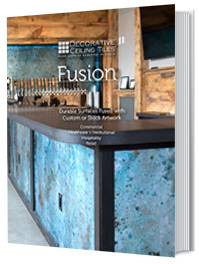Complete Guide on How to Install PVC Baseboards
Written by Milan Jara on 3rd Aug 2022

Looking to learn how to install PVC baseboards? While the instructions may be detailed, installing them is easy and effortless.
Baseboard installation can either be an easy job or a frustrating one depending on what you are dealing with. Ideal conditions are in perfectly aligned rooms with no deviations. However, if you have an older home, you may be aware that things aren’t as easy or as straightforward as they should be. We teach you how to install PVC baseboard molding in any room.
Why Should I Install Baseboards?
The British term for baseboards is “skirting boards”, just for a bit of history. The purpose of a baseboard is to cover the joint of the wall plus the adjoining floor for a more aesthetically pleasing look. It can bring the room together and hide any imperfections. Do you have to install baseboards? Technically, no. However, there are reasons why you may want to.
Baseboards are strips of material covering imperfections where floor and drywall intersect. They do more than cover imperfections, though. They also hide the extra space contractors provide along your flooring’s edge to allow your floor to contract and expand. Generally, there is a 1/4” expansion gap, and it is necessary.
Thankfully, installing baseboards covers this necessary eyesore.
When installing drywall, a 1/2” space is left along the bottom edge to prevent water damage to the drywall if there is a leak. The tiny gaps and cracks left when hanging drywall and installing flooring are hidden by baseboards, providing a more finished look.
Is Installing Baseboards Required or Mandatory?
While there are no building codes requiring baseboards or making them mandatory, it looks sloppy to exclude them. They cover the raw edges, so leaving it bare just makes the room look unfinished.
Baseboards also hide ugly joints and make the room look complete. Depending on how you paint them, they can complement your walls by adding a framed appearance.
What Size Should I Use?
The height of the baseboards depends on ceiling height. If you have ceilings over nine feet or higher, purchase a wider baseboard (5 1/4" plus). For lower or standard ceilings, 3 3/4” wide trims work best. The best tip on height is that the higher the ceiling, the taller the baseboard you can install.
You can also add a layer of trim above the baseboard to give the appearance of a taller baseboard.
How to Install a PVC Baseboard
When installing a baseboard, your first step is deciding the type and style of your baseboard based on what you prefer. Next comes buying and installing it. You will have to know how much you will need by measuring your space and buying extra in case you make a mistake.
Tools and Materials
- Miter saw
- Brad nailer
- Miter box
- 18-gauge brad nails
- Quarter round
- Stud finder
- Caulk
- Caulk gun
- Wood filler
- Pry bar
- Sandpaper
- Dust mask
- Safety glasses
- Paint
- Paintbrush and tape
- Gloves
- Utility knife
Installation
Installing baseboards is very easy. Once you have all your materials, you can install them by following these easy instructions.
1. Remove the Old Baseboard
When installing new flooring or carpeting, you will have to remove the old baseboards. Your flooring / carpeting goes under the baseboards, so leaving them on when installing new flooring isn’t the best idea. A pry bar will be required to remove them. It will prevent damage done to the walls.
2. Paint Your Baseboards

Experts recommend painting the baseboards before installation instead of after as this makes things easier. If your baseboards are primed, you must use one coat of stain or semi-gloss paint. If it is unfinished, a coat of primer and one or two coats of paint will need to be added.
3. Measure and Cut Your Baseboards

When cutting baseboards, keep the following in mind:
- Measure and cut only one baseboard as you go. Refrain from cutting them all simultaneously. Fitting the baseboards and cutting them as you go along allows for precision.
- Measure going from the long edge to the long edge, especially when measuring pieces containing a 45° angled cut.
- Outside and inside corners should be cut at 45° for inside / outside 90°.
- Baseboards are joined along the wall with 45° angles.
- Baseboard pieces should be butted up against a door casing with a 90° cut.
- Use carbide-tipped saw blades to cut as steel will quickly dull.
4. Attach Baseboard with a Brad Nailer

To attach the baseboard to the wall, use 18-gauge nails (1 1/2” or 2” brad nails). First, locate the studs using a stud finder. They are usually 16” apart. Use the stud finder to confirm each one as some homes may have them up to 24” apart.
Use the brad nailer to attach your baseboards to your drywall by securing it to the studs. You can also use PVC cement or construction adhesive, but along the bottom, add a brad nail gun for extra security. For nails that are closer to the bottom of the baseboard, attach to the framing behind the drywall. Be sure to use safety glasses to protect your eyes.
5. Fill the Nail Holes Using Wood Filler
Brad nails will leave tiny holes in your baseboard. While some people choose to leave them unfilled, it does improve your overall appearance if filled using wood filler. Once filled, allow to dry, then sand.
6. Install Quarter Round
If you have uneven floors or gaps, it is beneficial to install quarter round. This hides gaps where the baseboards meet the floor. While it isn’t a requirement, it will hide unsightly unevenness and gaps.
Using your brad nailer, attach the quarter round to the baseboard (not the flooring). Keep in mind flooring contracts and expands because of humidity/temperature fluctuations. If it is nailed to the floor, it will prevent natural shifting.
7. Caulk Baseboard Gaps

Your baseboards need caulking when there are gaps where the boards meet the wall. You can also use it when there are visible seams where baseboards meet. Be sure to use molding and trim caulk as it is crack-resistant, paintable, and flexible.
8. Touch Up Holes Then Paint
Once the nail holes have been sanded and the gaps caulked, add semi-gloss paint to finish the look for touch-ups.
When it comes to how to install PVC baseboard molding, the instructions are detailed but simple. By using this as a guideline, you will have a beautifully finished room in a fraction of the time. When choosing which baseboard to purchase, it all depends on personal style and what room they are going into.





